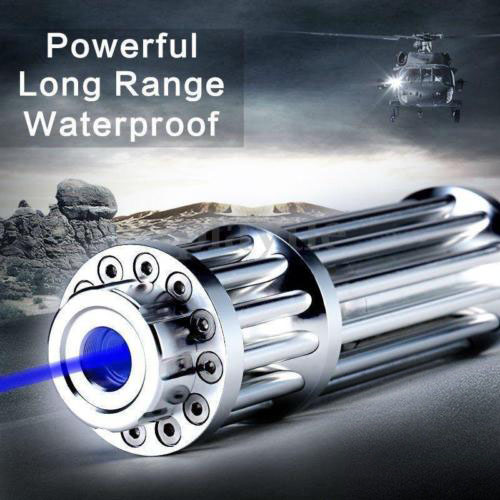Compared with semiconductor lasers, single-frequency fiber lasers have a much longer resonant cavity. Taking the distributed feedback (DFB) single-frequency fiber laser pointer with a short straight cavity structure as an example, the resonant cavity length is about 2-10cm, and the single-frequency The resonant cavity of a semiconductor laser is on the order of hundreds of um to mm, while Shanghai Hanyu’s CoSF-R "optimized traveling wave cavity type" single-frequency fiber laser has a cavity length of more than 10 meters and has extremely low phase noise.
The index that determines the relative intensity noise level of a single-frequency laser in the middle and low frequency bands is the relaxation oscillation peak. Single-frequency semiconductor lasers benefit from the composition of active gain medium and resonant cavity. The electrode and gain medium have a high degree of "overlap", exhibiting excellent relative intensity noise (RIN) performance, and the relaxation oscillation peak is usually as high as GHz. . The fiber laser is essentially end-pumped. The pump excitation of the active medium is uneven in length. At the same time, because the resonant cavity is longer, the relaxation oscillation peak frequency is lower. Distributed feedback (DFB) single The peak frequency of relaxation oscillation of a high-frequency fiber laser is usually around several hundred kHz to 1 MHz.
Single-frequency fiber lasers need to suppress the relative intensity noise (RIN) of single-frequency fiber lasers because of the low peak frequency of relaxation oscillation. Classical methods include current negative feedback, saturation amplification, and external cavity injection locking. The CoSF-D distributed feedback (DFB) single-frequency fiber laser developed by Shanghai HannStar has been suppressed by Relative Intensity Noise (RIN) and has obtained good results, as shown in the figure below.
Single-frequency fiber laser: It has the advantages of long coherence and narrow linewidth. It plays an important role in many special fields. The relative intensity noise of the suppressed CoSF-D distributed feedback (DFB) single-frequency fiber laser in the low frequency band is lower than -145dBc/Hz, the relaxation oscillation peak value is lower than -140dBc/Hz, and the relative intensity noise of the high frequency band is lower than -150dBc/Hz, close to shot noise level. It can be said that the suppressed CoSF-D distributed feedback (DFB) single-frequency fiber laser has a better relative intensity noise level than a single-frequency semiconductor laser, and it has both low phase noise and low relative intensity noise characteristics, which can be stabilized. Single longitudinal mode operation, single frequency, single polarization, single longitudinal mode output.
As mentioned earlier, the line width can be understood as the spectral line width of the spectrum, and the phase noise can intuitively reflect the line width of a single-frequency laser pointer. Compared with single-frequency semiconductor lasers, single-frequency fiber lasers have lower phase noise, so the intrinsic linewidth of single-frequency fiber lasers is much narrower than that of single-frequency semiconductor lasers. Determined by the structure and the length of the cavity. At present, there is no product with a line width of less than 1kHz for single-frequency semiconductor lasers.
Because the single-frequency fiber green laser pointer has a long cavity length, and the key component-fiber grating is very sensitive to temperature and vibration, this is a challenge to the control of wavelength stability and frequency drift. It is reported that the CoSF-D series of distributed feedback (DFB) single-frequency fiber lasers of Shanghai HannStar have reasonably designed the package of the active phase-shifted fiber grating in the laser and finely controlled the TEC circuit, so that the wavelength stability is better controlled and the wavelength is stable. Sex is around 10pm.
In addition, in order to be able to meet active wavelength locking and demanding applications with frequency drift, the active phase shift fiber grating of the CoSF-D distributed feedback (DFB) single-frequency fiber laser can be installed in the piezoelectric ceramic transducer (PZT) Above, it is used to adjust the cavity length of the single-frequency fiber laser to achieve wavelength locking or rapid modulation of the single-frequency fiber laser. The PZT selected by the CoSF-D distributed feedback (DFB) single-frequency fiber laser can achieve a wavelength tuning range close to 20GHz under the condition of 200V voltage driving, and the linear response frequency of fast wavelength modulation can reach 20kHz, which can well meet the requirements of fixed Difference frequency locking, external injection locking and frequency stabilization requirements.
Current status and application prospects of single-frequency laser pointer market. After decades of development, single-frequency fiber laser technology has developed relatively mature and complete. As an important high-precision light source, single-frequency fiber laser has a wide range of applications. Although compared with the high-power fiber lasers in the mainstream material processing market, the single-frequency laser market is smaller, but with its unique performance and wide application in special fields, it will become an important supplement to the laser technology team.
At present, single-frequency lasers are mainly used in distributed optical fiber acoustic wave sensing systems, perimeter security, hydrophones, and coherent lidar systems to achieve high-precision imaging, speed and distance remote sensing detection. In addition, single-frequency lasers will also play an important role in fields such as oil and gas exploration systems, pipeline monitoring, gas leak detection, cold atom physics, space laser communications, and microwave photonics.

